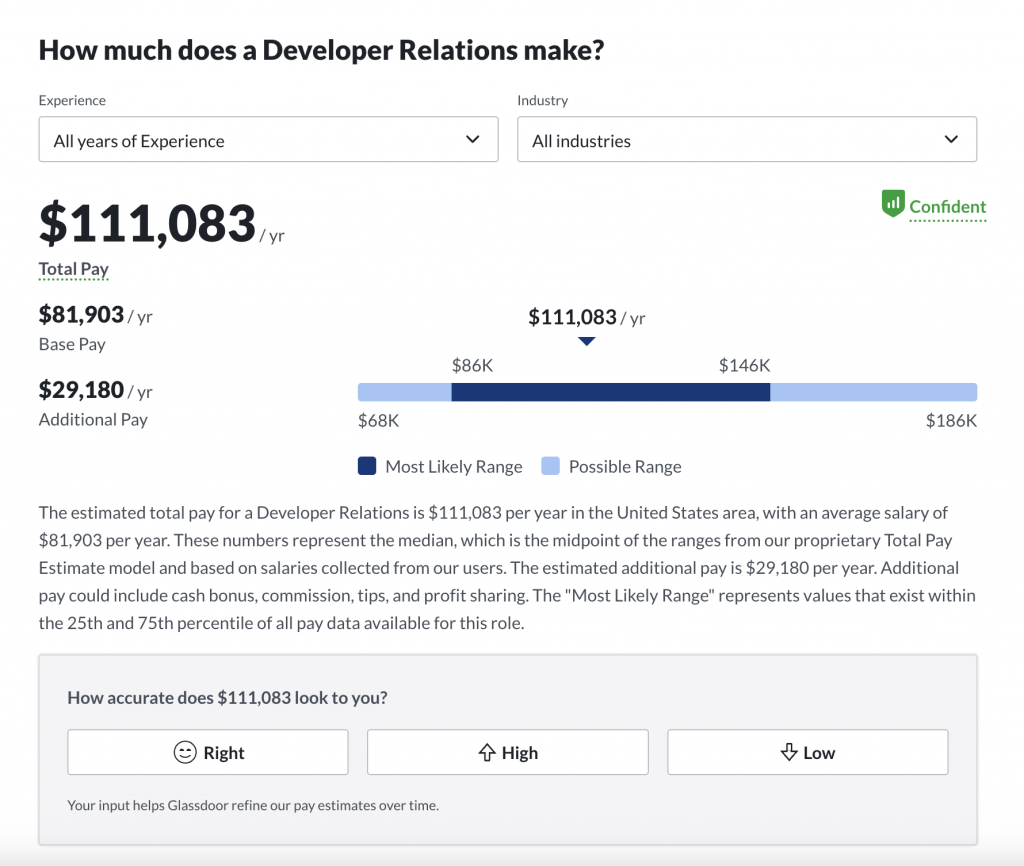DevRel, short for Developer Relations, is a critical part of many tech companies. It refers to the strategic efforts aimed at engaging and nurturing relationships with the developer community.
At its heart, DevRel is about building trust and creating meaningful engagement with developers. Done well, it creates an environment where developers feel supported, heard, and inspired to use your product.
But what does DevRel actually look like in practice? What roles make up a strong DevRel team? And—just as important—who should you hire first?
As the founder of Stateshift, I’ve worked with 250+ venture-backed companies to build their DevRel programs from the ground up. The hiring decisions they make in those first six months often determine whether their developer strategy becomes a growth engine or an expensive experiment. At Stateshift, we’ve identified specific patterns in role sequencing that consistently lead to measurable business outcomes
Key DevRel Jobs
DevRel usually consists of three primary roles: Director of Developer Relations, Community Manager, and Evangelist.
Each plays a unique part in establishing and cultivating relationships between the company and its developer community.
1. Director of Developer Relations
The Director of Developer Relations is often a senior role within companies that are further along in their growth.
This individual is responsible for overseeing the DevRel strategy, ensuring that cross-team collaboration occurs effectively.
They usually interact with different departments like marketing, sales, product, and engineering, making sure these teams align with stakeholder requirements.
The Director of Developer Relations role isn’t typically the first hire in a nascent company. Rather, this role becomes crucial as the company matures and requires a leader to synchronize the DevRel activities with the broader company strategy.
2. Community Manager
The Community Manager is akin to the backbone of the developer community.
Their role involves building, nurturing, and growing the community by creating engaging content, managing community channels, and organizing events.
They are also responsible for improving the onboarding process for new members and creating engaging experiences for existing ones.
The Community Manager’s role becomes significant in the early stages of community-building, with the primary goal being attracting and retaining members.
This role is often the starting point in setting up a solid developer community structure.
3. Evangelist
The Evangelist, the voice of the company, is primarily tasked with creating awareness and excitement around the company’s products or services.
Their responsibilities include delivering tech demos, advocating for the company, performing outreach, and creating compelling content.
They are often the face of the company at conferences, webinars, and other public forums. Once a robust community structure is in place, the Evangelist plays a crucial role in driving traffic and attention to it.
A Role on the Rise: The DevRel Engineer
An increasingly vital role is the DevRel Engineer—a hybrid who can write code, build demos, and serve as a technical bridge between developers and the company. While not always the first hire, this role can amplify credibility and deepen the feedback loop with your product team.
We wrote more about this in Stateshift’s blog post on exploring job roles in Developer Relations, where we break down how these roles fit together in different stages of growth.
DevRel Salaries
DevRel salaries varyies widely depending on the specific role, company size, and geographical location.
Be sure to check out this link from Glassdoor which provides some fairly current salary information. This is the salary for DevRel at the time of writing:

Who do you hire first?
For a successful DevRel strategy, I usually recommend companies start out with a community management role. This role establishes the necessary foundations for the community, ensuring that there’s a structured delivery system in place.
Following this, an evangelist should be brought in to generate excitement and awareness around the community. Ideally, when the community structure is stable and operational, the evangelist drives traffic towards it.
Lastly, as the company grows and matures, a Director of Developer Relations can be introduced. This person coordinates the activities of the community manager and evangelist, aligning these with the company’s overarching strategy.
It’s crucial to remember that while these roles have distinct responsibilities, there is often overlap, particularly in smaller teams or startup environments. Flexibility is a must, with the success of DevRel lying in the balance and synchronization of all these roles.
What about a DevRel Engineer?
A noteworthy role in the realm of DevRel is the DevRel Engineer. This role, while not as prominent as the aforementioned ones, is increasingly becoming essential. But what is a DevRel Engineer?
A DevRel Engineer is a hybrid role, combining aspects of software engineering and DevRel.
These folks are technically skilled, often with a strong background in software development, and carry the responsibility of representing the developers within the company.
Their role includes writing code, building demos, providing developer feedback to the product team, and communicating technical aspects of the product to the developer community.
Their position serves as a bridge between the company’s technical team and the developer community, which allows them to understand both parties’ needs and communicate effectively.
The Stateshift DevRel Foundation Stack
Through our coaching work at Stateshift, we’ve developed what we call the ‘DevRel Foundation Stack’—a systematic approach to building DevRel teams that actually drive business results.
Most companies make the mistake of hiring an evangelist first because it feels like the most obvious DevRel activity. But without community infrastructure in place, you’re essentially driving traffic to an empty parking lot.
Our approach prioritizes foundation-building over visibility, which is why we recommend the Community Manager ? Evangelist ? Director sequence. This isn’t just theory—we’ve seen teams following this pattern achieve 40% higher developer onboarding completion rates compared to those who hire evangelists first.
Stay focused on value
However you hire, ensure you focus on these key elements as you start to build out your developer community:
- Community First: Always prioritize the community. The developer community is not just a customer base; it’s a group of individuals who can help improve and promote your product. Listen to their needs, consider their feedback, and communicate openly with them.
- Authenticity: Authenticity is key in DevRel. The community values genuine interactions and honest feedback. Therefore, maintaining authenticity in your communication helps build trust and fosters a strong relationship.
- Value Delivery: Ensure that you’re not just promoting your product but providing value to the community. This could be through educational content, insightful discussions, or useful tools. Delivering value helps maintain engagement and loyalty within the community.
- Collaboration: Collaboration is a vital aspect of DevRel. Whether it’s collaborating with the community, with other teams in your company, or even with other companies, successful DevRel involves working together to achieve shared goals.
Closing Thought
DevRel isn’t a single job—it’s an ecosystem of roles working together. At Stateshift, we help companies understand not just who to hire, but how to measure whether those hires are actually driving business outcomes. From Community Managers tracking onboarding completion to Evangelists measuring developer-to-customer conversion, each role needs clear metrics that executives understand.
Because in the end, building a thriving developer community isn’t just about who you hire—it’s about how you align those roles with a strategy that delivers measurable value to your business.








